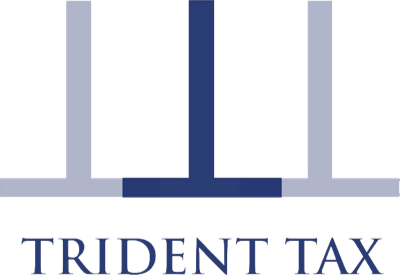Key Points
• HMRC declares full arsenal of weaponry to defeat aggressive tax avoidance
• HMRC signals its focus will be on clearing backlog via litigation followed by downsizing anti-
avoidance resources
• HMRC resources will be shifted to combat offshore tax evasion using new data from overseas
• Calls from Tax Profession not to neglect onshore tax evasion
In Spring this year, the Treasury Sub-Committee called for evidence as part of its enquiry into tax avoidance and evasion.
The scope of the Sub-Committee’s enquiry includes consideration of the following questions:
• To what extent has there been a shift in tax avoidance and offshore evasion since 2010? Have
HMRC efforts to reduce avoidance and evasion been successful?
• Is HMRC adequately resourced and sufficiently skilled to identify, challenge and counteract
existing and new avoidance schemes and ways of evading tax? What progress has it made since
2010 in promoting compliance in this area and preventing and responding to non-compliance?
• What types of avoidance and evasion have been stopped and where do threats to the UK tax base
remain?
• What part do the UK’s Crown Dependencies and Overseas Territories play in the avoidance or
evasion of tax? What more needs to be done to address their use in tax avoidance or tax
evasion?
• How has the tax profession responded to concerns about its role in aiding tax avoidance and
evasion? Where does it see the boundary between acceptable and unacceptable practice lie?
(Source: https://www.parliament.uk/business/committees/committees-a-z/commons-select/treasury-committee/treasury-sub-committee/inquiries/parliament-2017/tax-avoidance-evasion-17-19/ )
Although the enquiry has yet to publish any conclusions or recommendations, some key themes may be emerging based on aspects of the evidence now in the public domain.
In particular, it is interesting to note the contributions made orally by HMRC on 17 April this year. One example of note is the following statement made by David Richardson, interim Director General, Customer Strategy and Tax Design, who said the following:
“In the avoidance space, we have pretty well got the full hand that we have been looking for as a result of measures that have been introduced over the last five or six years. Probably the biggest game changer the Government have introduced is Accelerated Payment Notices”
(Source: http://data.parliament.uk/writtenevidence/committeeevidence.svc/evidencedocument/treasury-subcommittee/tax-avoidance-and-evasion/oral/81667.html )
The clear message from HMRC through this and other statements made in evidence is that HMRC believe they have all the tools necessary to tackle tax avoidance: this would include the Disclosure of Tax Avoidance Schemes (DOTAS) regulations; the General Anti-Abuse (GAAR) Regulations; various Targeted Anti Avoidance Rules (TAAR) and, as noted above, Accelerated Payment Notices (APNs), widely seen as fundamentally changing the economics of structured tax avoidance.
David Richardson goes on to signal that HMRC’s Counter Avoidance department will continue to focus on clearing the stock of historic tax avoidance cases (estimated by him at 80,000 users, currently with 75% by value in, or about to be in, formal litigation) but will then likely diminish in size significantly: in other words, the tax avoidance landscape is viewed by HMRC as having fundamentally shifted in recent times with a significant reduction in tax avoidance activity, and consequently much less HMRC resources required in the future.
Importantly, looking forwards, HMRC’s evidence suggests that they view the Common Reporting Standard (CRS) as a ‘game changer’ and the strategic driver of the next fundamental shift – the battle against tax evasion, in particular offshore tax evasion:
“We have had the first batch of that data [CRS] from the first 50 jurisdictions that signed up, but this autumn we are due to get information from the 100 jurisdictions that have signed up. That will provide us with data that we have never had before on a comprehensive basis of people in the UK putting money offshore”
(Source: Ibid)
This timing clearly aligns with the “Requirement to Correct” and “Failure to Correct” regulations which introduced extremely harsh penalties for offshore related tax irregularities which are not disclosed by 30 September 2018 (i.e. just before HMRC receives the majority of the bulk data via the CRS procedures).
By way of counter-balance to the above, it is interesting to note the written evidence provided to the Sub-Committee by the Chartered Institute of Tax (CIOT) (see https://www.tax.org.uk/media-centre/press-releases/press-release-persistent-tax-evasion-problem-merits-more-hmrc-focus-not ).
Whilst reinforcing the fact that the tax avoidance landscape has dramatically changed, the CIOT calls for HMRC to focus its attention on what they describe as ‘the elephant in the room’: onshore tax evasion and the hidden economy. This is on the basis that HMRC has, in the CIOT’s view, the legislative weaponry and international infrastructure (e.g. CRS, information exchange agreements) to deal with offshore tax evasion and should invest more in data analytics and human resources to tackle onshore tax evasion.
Where HMRC’s evidence and the CIOT’s submission clearly align, however, is that they imply a shift of activity away from tackling tax avoidance and much more heavily towards tackling tax evasion (both offshore and onshore).
With the “Failure to Correct” deadline of 30 September 2018 fast approaching, this should be ringing alarm bells for anyone concerned about their historic tax compliance situation. In order to meet that deadline steps will need to be taken now to review any areas of potential risk so that, if necessary, disclosures can be made. For some this could be straightforward; for many more, there are likely to be complexities and uncertainties that need careful review and analysis before decisions can be made.
If you need some help to consider matters relating to the above issues, please contact us.
